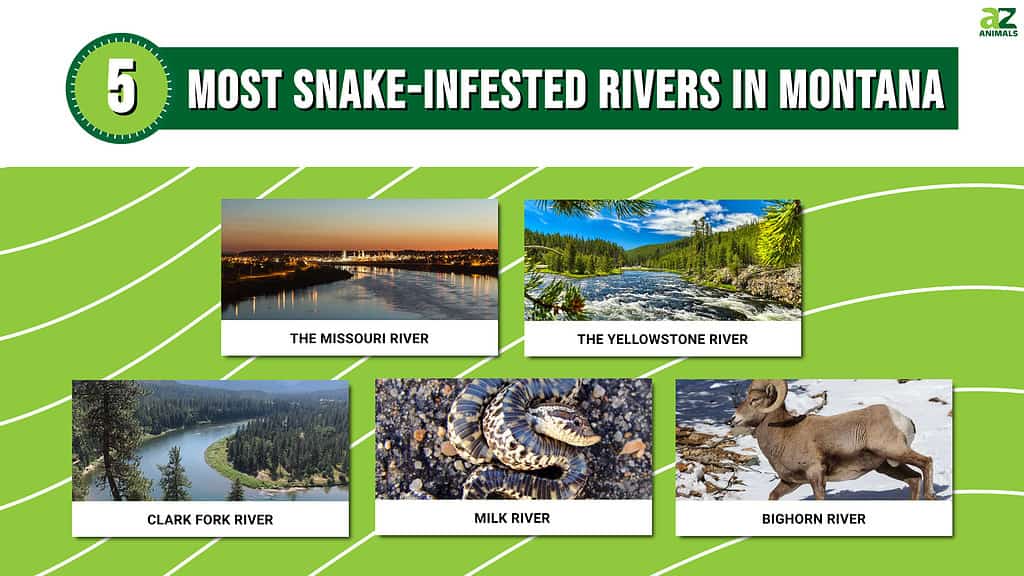
Unlike other parts of the country, Montana has relatively few species of native snakes. Although ten snakes live within the state’s borders, only one, the prairie rattlesnake, also known as the western rattlesnake (Crotalis viridis), is venomous.
10 Species of Snakes Found In Montana
The following ten species of snakes call Montana home:
- Common Garter Snake
- Bullsnake (a subspecies of the Gopher Snake)
- Racer Snake
- Northern Rubber Boa
- Plains Garter Snake
- Plains Hognose Snake
- Prairie Rattlesnake
- Smooth Green Snake
- Terrestrial Garter Snake
- Western Milk Snake
Are There Water Snakes Found In Montana Rivers?

Plains garter snakes, found in Montana rivers, are strong swimmers.
©Alyssa Metro/Shutterstock.com
Water snakes are commonly found in the southern and eastern parts of the United States. Additionally, a few species live in the Midwest and California. However, there are no true water snakes native to Montana.
Although Montana does not have water snakes, some species in the state live near bodies of water and can be found swimming in them as well. These snakes are called semi-aquatic.
Semi-aquatic snakes in Montana are the garter snakes, and these include:
- Common Garter Snake
- Plains Garter Snake
- Terrestrial Garter Snake
Semi-aquatic snakes aren’t the only species of snake you may encounter in rivers. All snakes can swim, even if they aren’t water snakes or semi-aquatic.
Read on to find out about the most snake-infested rivers in Montana.
The 5 Most Snake-Infested Rivers in Montana
Although there are no water snakes in Montana, numerous snake species live near rivers and sometimes can be found swimming in them. Here are five snake-infested rivers in Montana.
1: The Missouri River
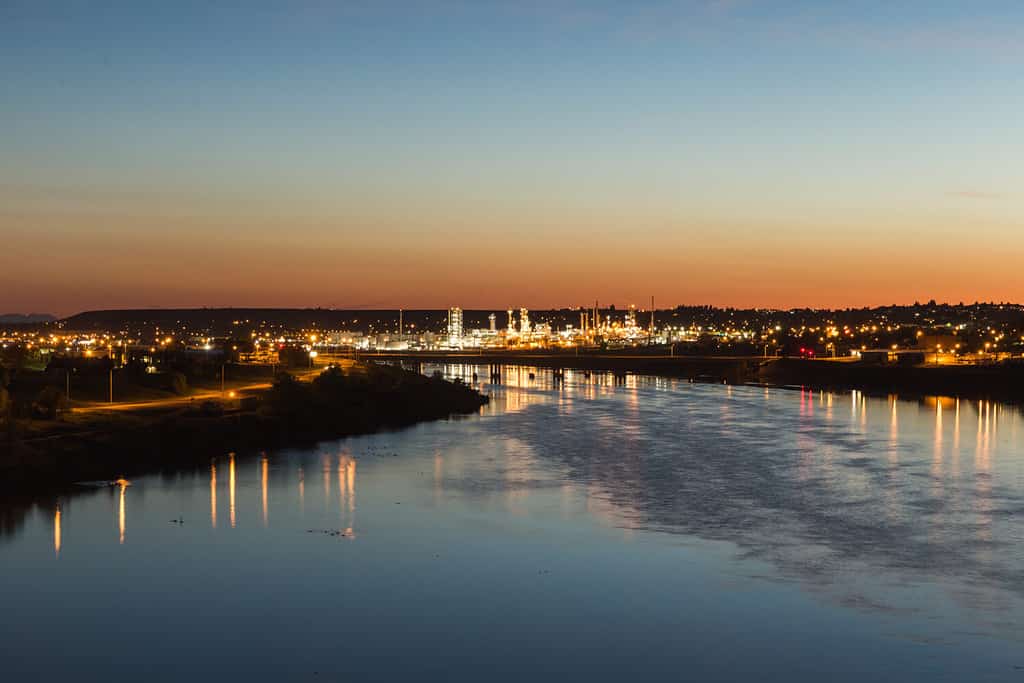
The Missouri River is the longest river in North America and the fourth longest in the world.
©Shane N. Cotee/Shutterstock.com
The Missouri River is the longest river in the United States. It flows over 2,500 miles from its source in the Rocky Mountains of Montana to where it meets up with the Mississippi River in St. Louis, MO. Many different species of snakes are found along the southern portions of the river as it flows through Kansas and Missouri. But in Montana, you are most likely to spot one of the state’s three species of garter snakes in or around the river.
You may also encounter Montana’s only venomous snake species, the prairie rattlesnake. Sightings of the rattlesnake have been reported near Great Falls, MT, near the Missouri River. Additionally, a reporter for the Great Falls Tribune noticed a gopher snake, Montana’s largest snake species, basking in the early morning sun on the side of a jogging trail.
2: The Yellowstone River
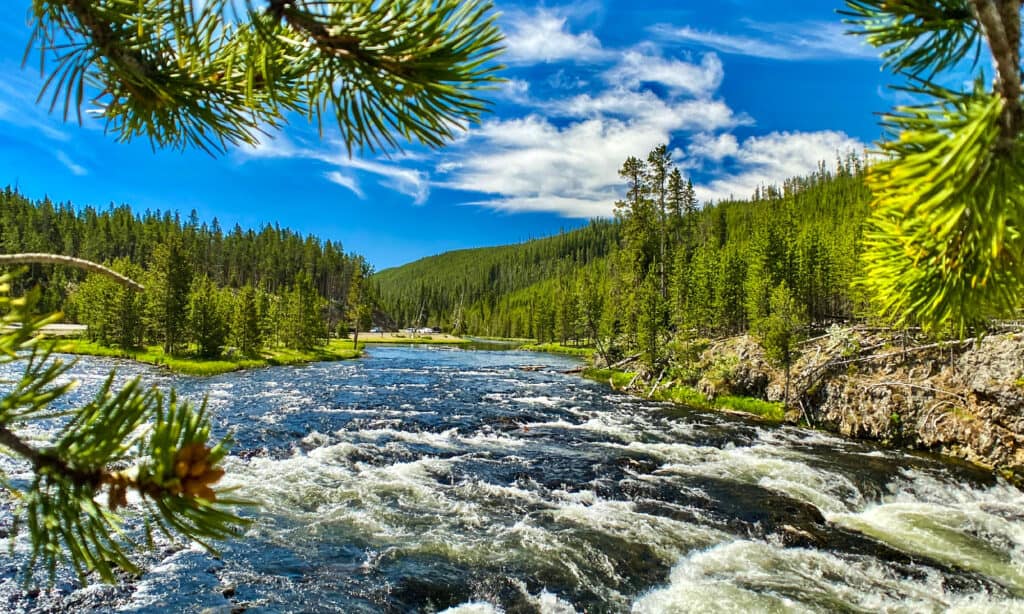
The venomous prairie rattlesnake can be found around the Yellowstone River.
©iStock.com/samuel howell
The Yellowstone River originates in Wyoming, flows into southern and eastern Montana, and ends in North Dakota. The snakes you might come upon along its banks or swimming in the water include northern rubber boas, bullsnakes, common garter snakes, terrestrial garter snakes, and eastern racers.
According to a report, a prairie rattlesnake was found in Paradise Valley, along the Yellowstone River. And in an extremely rare occurrence, a woman walked into an apartment in Livingston, MT, to find a rattlesnake camped out on the kitchen table. Livingston is a small town that rests on the banks of the Yellowstone River.
3: Clark Fork River
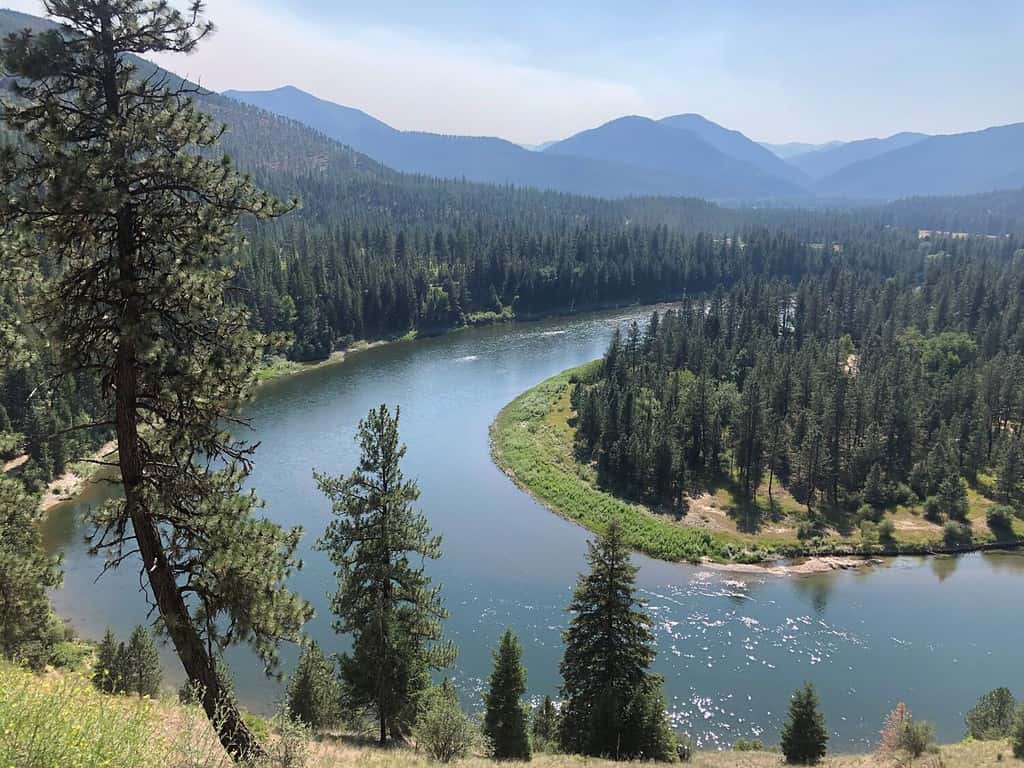
Clark Fork River originates in the Rocky Mountains and flows through Montana, ending in northern Idaho.
©md hess/Shutterstock.com
The Clark Fork River is one of the longest rivers in Montana, and the largest by volume. The river begins in the Rocky Mountains in Montana, flowing through the western part of the state and ending in northern Idaho. Snake species you may find in and around the river include the common garter snake, terrestrial garter snake, bullsnake, racer, rubber boa, and prairie rattlesnake.
Residents sometimes mistake bullsnakes for rattlesnakes, according to The Missoulian. Although the prairie rattlesnake also lives in the region, it’s sighted much less frequently.
Racer snakes live near the Clark Fork River as well. Racers are fast and agile and can speed away as quickly as 3.5 miles per hour. They often live near water and can sometimes be heard rustling through the grass along hiking trails.
Occasionally you can spot a rare rubber boa hiding under rocks or logs. This unique snake looks and feels like rubber. The small boa is mostly active at night, rarely making an appearance during the day. However, there are sometimes reports of rubber boa sightings along hiking trails.
4: Milk River
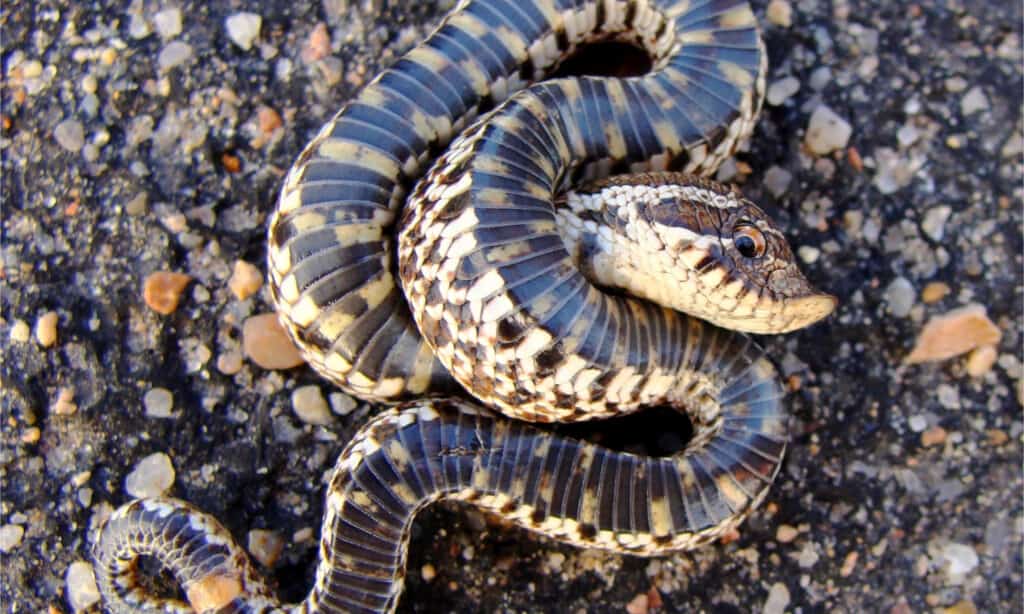
Plains hognose snakes will roll onto their backs and play dead when disturbed as a defense against predators.
©Matt Jeppson/Shutterstock.com
The 729-mile-long Milk River is a tributary of the Missouri River and the second-longest river in Montana. It originates in the Rocky Mountains of Montana, flowing north into Alberta, Canada, and then southeast to join with the Missouri River near Fort Peck, MT.
The Milk River gets its name from its distinct milky color, which is a result of the fine clay and silt sediments that erode along the river basin in Alberta. Snakes you may encounter in the Milk River include the common garter snake, bullsnake, prairie rattlesnake, racer, and hognose snake.
5: Bighorn River
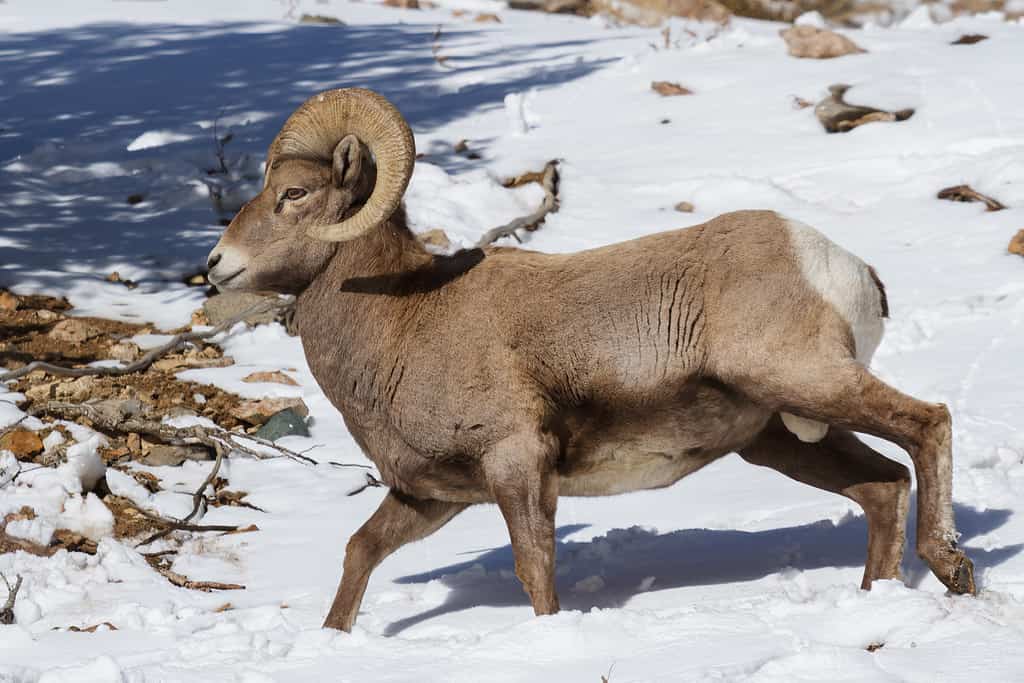
In 1805, fur trader Francois Larocque named the river for the bighorn sheep he saw roaming along its banks.
©iStock.com/Gary Gray
Named for the big horn sheep living along the riverfront, the Bighorn River is a tributary of the Yellowstone River. It flows 461 miles through Wyoming and Montana. Snakes you can find in and around the Bighorn River include the common garter snake, rubber boa, and prairie rattlesnake.
The National Park Service of Montana warns visitors to the nearby Bighorn Canyon to watch out for the dangerous prairie rattlesnake. The prairie rattlesnake is common in the area, and experts estimate there is an average of one snake per acre living in the canyon.
Summary Of The Most Snake-Infested Rivers In Montana
| Rank | River | Snakes Found |
|---|---|---|
| 1 | Missouri River | Common garter snake, plains garter snake, terrestrial garter snake, bullsnake, prairie rattlesnake |
| 2 | Yellowstone River | Common garter snake, terrestrial garter snake, bullsnake, racer snake, prairie rattlesnake, northern rubber boa |
| 3 | Clark Fork River | Common garter snake, terrestrial garter snake, bullsnake, rubber boa, prairie rattlesnake, racer snake |
| 4 | Milk River | Common garter snake, prairie rattlesnake, terrestrial garter snake, prairie rattlesnake |
| 5 | Bighorn River | Common garter snake, terrestrial garter snake, bullsnake, rubber boa, prairie rattlesnake, racer snake |
Other Animals Found Near Rivers in Montana
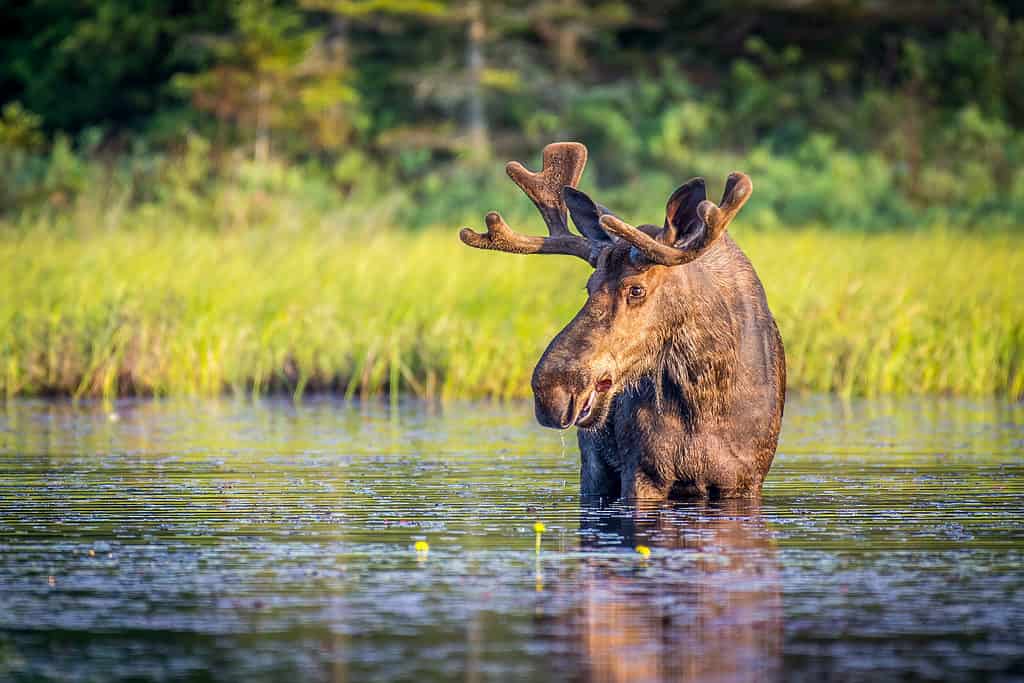
Moose are strong swimmers and can hold their breath underwater for up to a minute.
©Mark Byer/Shutterstock.com
Sparsely populated by people, Montana supports a diverse array of wildlife. Many animals living in Montana rely on the state’s rivers and other freshwater sources for survival. Some of the many fish species swimming in the rivers include trout, catfish, bass, walleye, and sturgeon.
Some of the larger mammals you may find around the banks of Montana’s many rivers include moose, black bears, elk, big-horn sheep, and grizzly bears. Additionally, other animals that live near the many rivers and streams in the state include white-tail deer, beavers, river otters, and muskrats.

Weighing two to four pounds, muskrats inhabit freshwater rivers across Montana.
©Anton MirMar/Shutterstock.com
Finally, many bird species make their homes near rivers in Montana. Some of these include geese, swans, ducks, pheasants, osprey, and bald eagles.
The photo featured at the top of this post is © melissamn/Shutterstock.com
Discover the "Monster" Snake 5X Bigger than an Anaconda
Every day A-Z Animals sends out some of the most incredible facts in the world from our free newsletter. Want to discover the 10 most beautiful snakes in the world, a "snake island" where you're never more than 3 feet from danger, or a "monster" snake 5X larger than an anaconda? Then sign up right now and you'll start receiving our daily newsletter absolutely free.
Thank you for reading! Have some feedback for us? Contact the AZ Animals editorial team.






